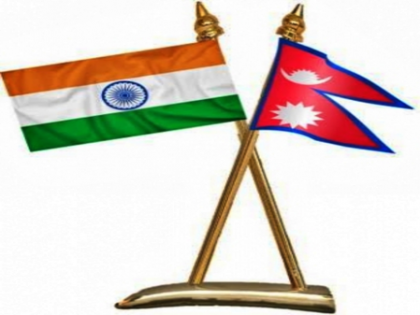Nepal's trade with China grew but India remains largest partner
By IANS | Updated: September 11, 2025 18:00 IST2025-09-11T17:57:31+5:302025-09-11T18:00:26+5:30
New Delhi, Sep 11 India’s geographic proximity, long-standing trade treaties, duty-free access for many goods, and seamless land ...

Nepal's trade with China grew but India remains largest partner
New Delhi, Sep 11 India’s geographic proximity, long-standing trade treaties, duty-free access for many goods, and seamless land transit routes have made it Nepal’s largest trade partner.
Bilateral trade with India exceeded $8 billion at current exchange rate in the fiscal year 2022-23, according to a Nepal embassy statement on May 8.
Imports in the 2022-23 fiscal amounted to more than $7 billion and exports to India stood at about $755 million.
But a shift, though comparatively small, was palpable, say reports.
In the first nine months of the fiscal year 2023-24, total exports from Nepal decreased by 3.7 per cent compared to the same period in the previous fiscal year, claimed the online news portal nepsetrading.
“The reduction in exports is attributed mainly to a significant drop in exports to India, which fell by 6.2 per cent, it reported, adding, “Conversely, exports to China surged by 232 per cent.”
However, it noted that it still represented “a small fraction of total exports”. Meanwhile, exports to other countries also saw a decline of 2 per cent.
While total imports for the same period witnessed a decline of 2.8 per cent, including India (by 3.2 per cent), volume from China increased significantly by 33.4 per cent.
Since Communist leaders assumed charge in Nepal, the government turned towards the Dragon, which observers attributed to their shared political philosophy.
In fact, when the now-resigned Prime Minister of Nepal, K. P. Sharma Oli, decided to pay an official visit to China in end-2024, the media reported “a strategic departure from the tradition” where Nepali leaders made India their first foreign destination upon assuming office.
The shift was viewed as one highlighting the evolving dynamics of Nepal’s foreign policy.
All this while, trade and economy lagged even as political protests hit the streets from time to time, leading to frequent changes in government.
“Nepal's trade is at a crossroads. Once a key exporter of agricultural commodities, the country now struggles to sustain its own demand for essential goods, including paddy, milk, and sugarcane,” observed Sumit Bikram Rana, Program Director, The Himalayan Dialogues.
Writing in The Himalayan Times in March this year, he urged that Nepal should focus on positioning itself as a competitive supplier in Indian markets, rather than “viewing India solely as a dominant exporter”.
Historically, a net exporter of paddy, sugarcane, and lentils, the Himalayan country now imports staples such as wheat, sugar, and cooking oil.
Key agricultural bottlenecks include fragmented landholdings preventing large-scale cultivation, poor storage and logistics, underdeveloped agro-processing units, and lack of all-weather irrigation facilities.
As a result, Nepal’s agricultural exports have languished, even while Chinese and Indian supplies flood domestic markets, further discouraging local producers.
The World Bank projected Nepal's economy to grow 4.5 per cent in FY2025, up from 3.9 per cent in FY 2024, despite significant natural disasters in late 2024. It predicted growth to be driven by increased domestic trade, hydropower generation and paddy production.
It is now to be seen how the country copes with the new wave of protest movement sweeping the country.
Disclaimer: This post has been auto-published from an agency feed without any modifications to the text and has not been reviewed by an editor
Open in app